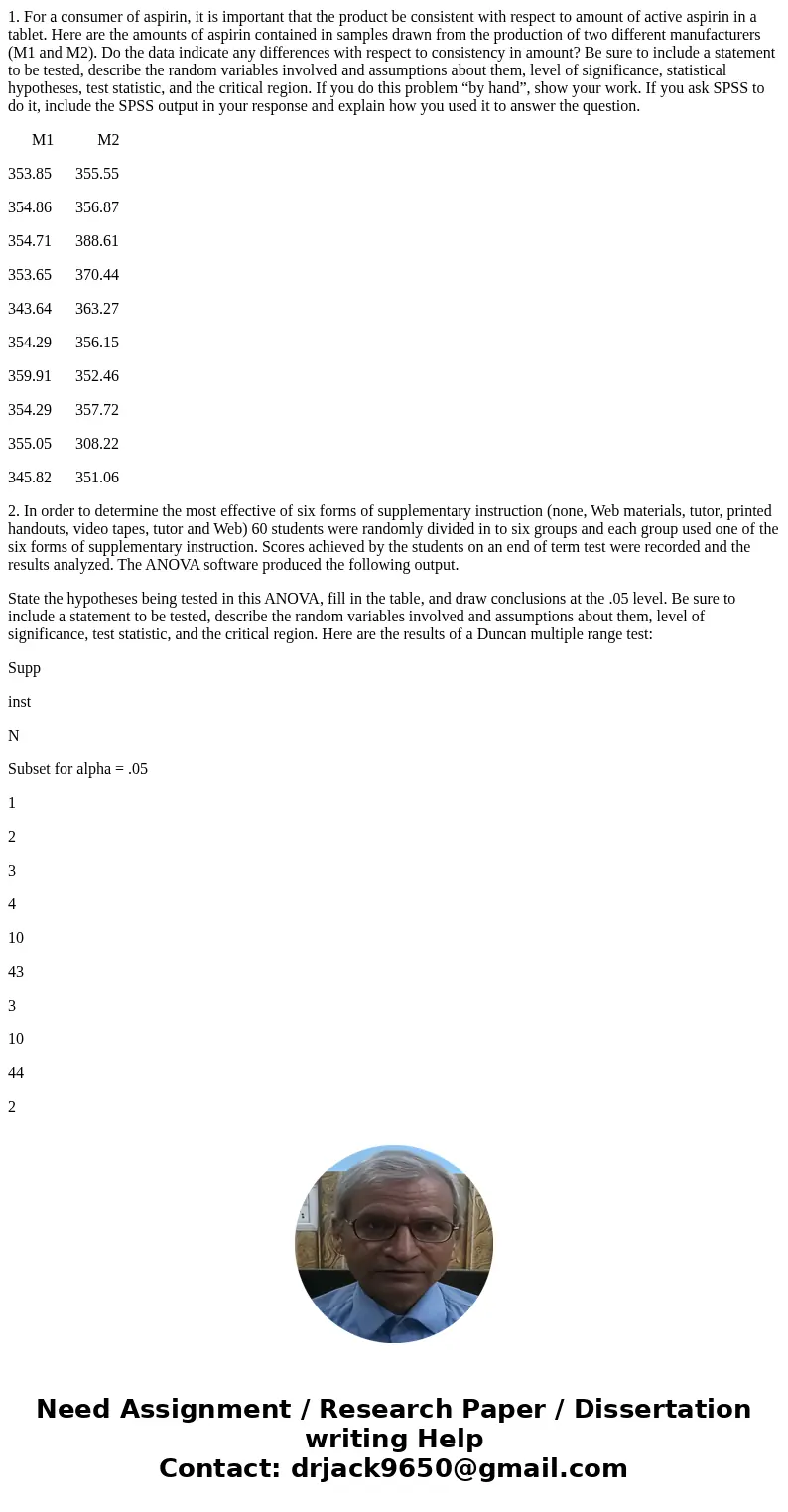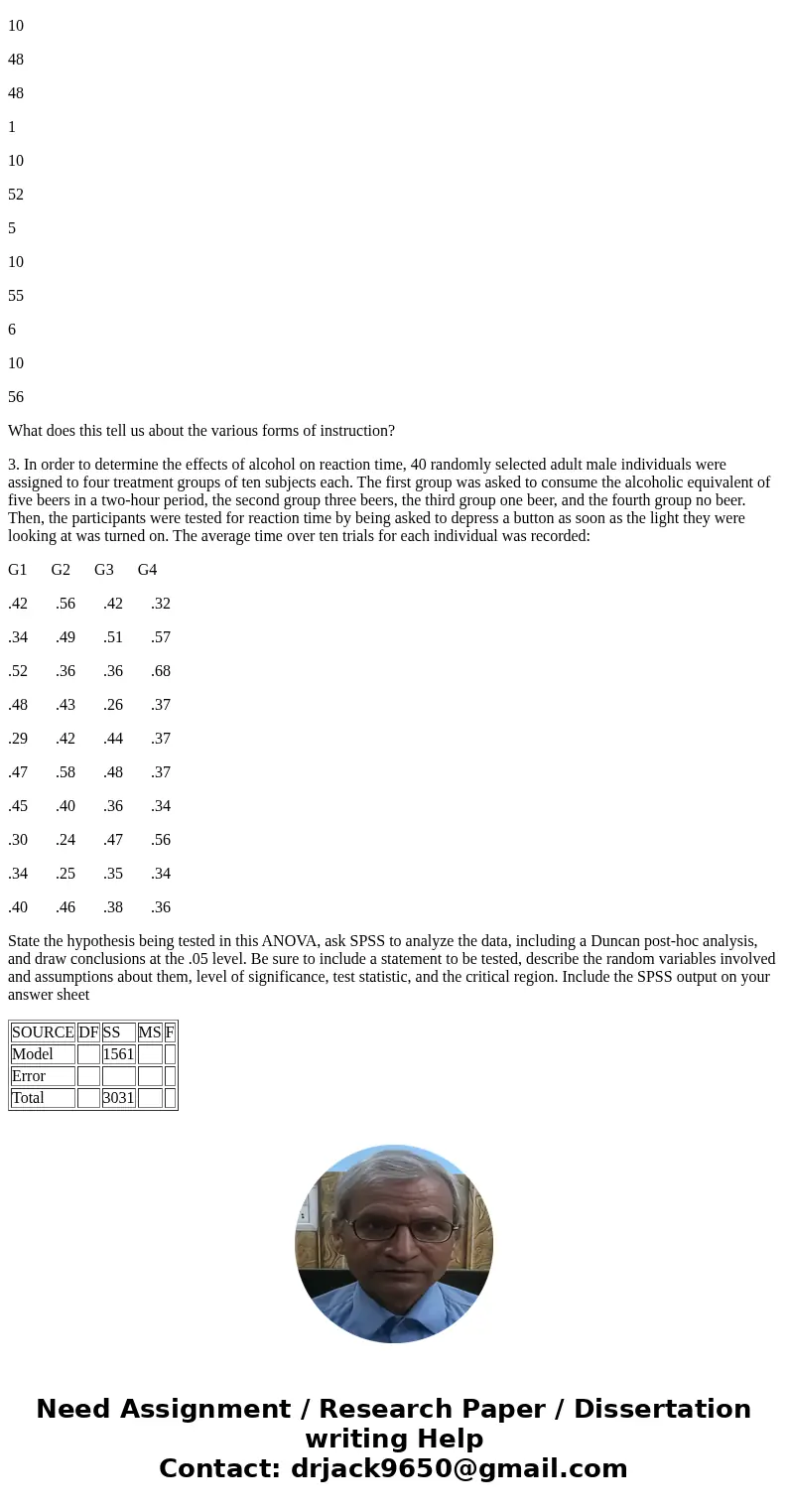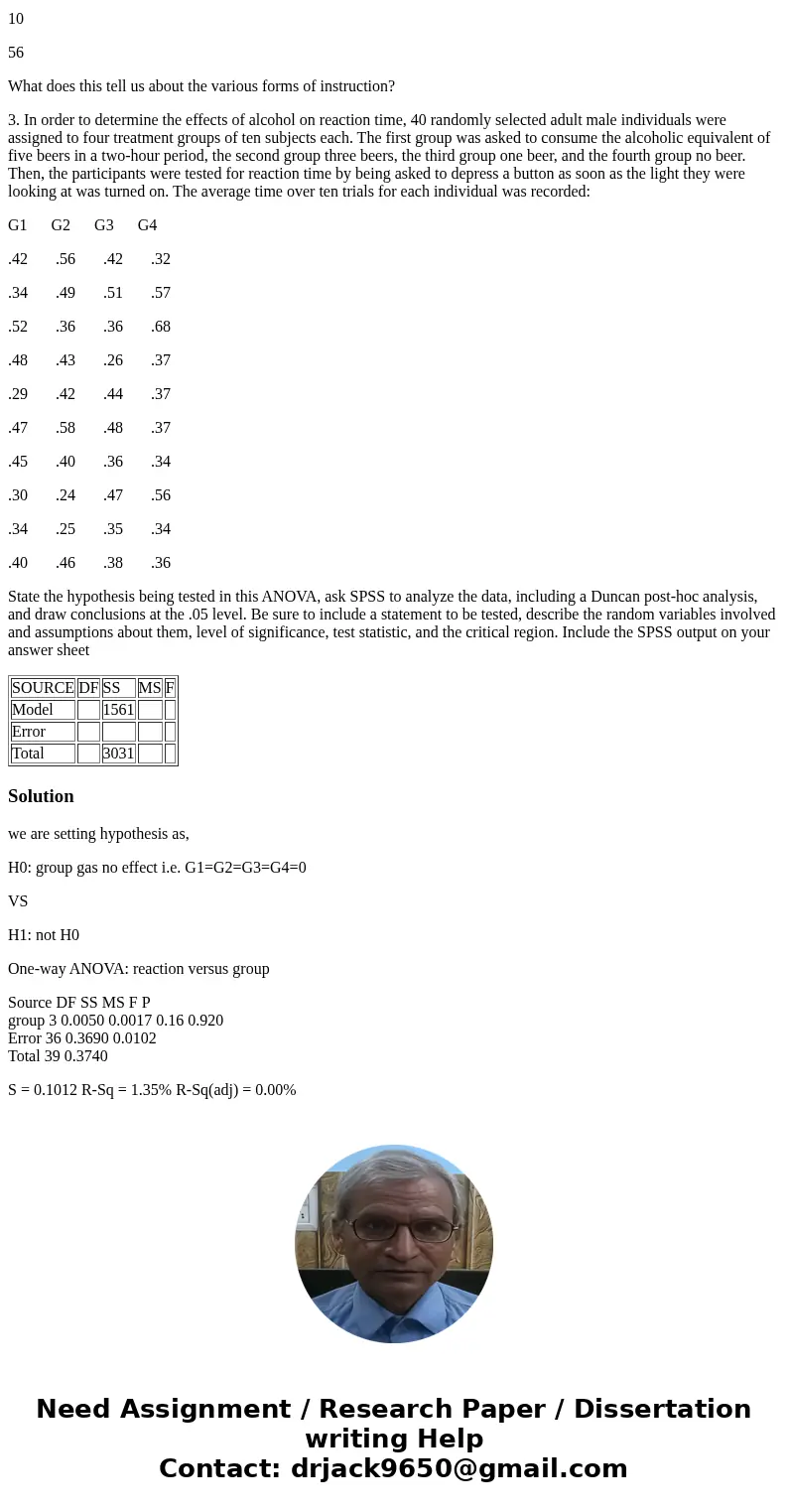1 For a consumer of aspirin it is important that the product
1. For a consumer of aspirin, it is important that the product be consistent with respect to amount of active aspirin in a tablet. Here are the amounts of aspirin contained in samples drawn from the production of two different manufacturers (M1 and M2). Do the data indicate any differences with respect to consistency in amount? Be sure to include a statement to be tested, describe the random variables involved and assumptions about them, level of significance, statistical hypotheses, test statistic, and the critical region. If you do this problem “by hand”, show your work. If you ask SPSS to do it, include the SPSS output in your response and explain how you used it to answer the question.
M1 M2
353.85 355.55
354.86 356.87
354.71 388.61
353.65 370.44
343.64 363.27
354.29 356.15
359.91 352.46
354.29 357.72
355.05 308.22
345.82 351.06
2. In order to determine the most effective of six forms of supplementary instruction (none, Web materials, tutor, printed handouts, video tapes, tutor and Web) 60 students were randomly divided in to six groups and each group used one of the six forms of supplementary instruction. Scores achieved by the students on an end of term test were recorded and the results analyzed. The ANOVA software produced the following output.
State the hypotheses being tested in this ANOVA, fill in the table, and draw conclusions at the .05 level. Be sure to include a statement to be tested, describe the random variables involved and assumptions about them, level of significance, test statistic, and the critical region. Here are the results of a Duncan multiple range test:
Supp
inst
N
Subset for alpha = .05
1
2
3
4
10
43
3
10
44
2
10
48
48
1
10
52
5
10
55
6
10
56
What does this tell us about the various forms of instruction?
3. In order to determine the effects of alcohol on reaction time, 40 randomly selected adult male individuals were assigned to four treatment groups of ten subjects each. The first group was asked to consume the alcoholic equivalent of five beers in a two-hour period, the second group three beers, the third group one beer, and the fourth group no beer. Then, the participants were tested for reaction time by being asked to depress a button as soon as the light they were looking at was turned on. The average time over ten trials for each individual was recorded:
G1 G2 G3 G4
.42 .56 .42 .32
.34 .49 .51 .57
.52 .36 .36 .68
.48 .43 .26 .37
.29 .42 .44 .37
.47 .58 .48 .37
.45 .40 .36 .34
.30 .24 .47 .56
.34 .25 .35 .34
.40 .46 .38 .36
State the hypothesis being tested in this ANOVA, ask SPSS to analyze the data, including a Duncan post-hoc analysis, and draw conclusions at the .05 level. Be sure to include a statement to be tested, describe the random variables involved and assumptions about them, level of significance, test statistic, and the critical region. Include the SPSS output on your answer sheet
| SOURCE | DF | SS | MS | F |
| Model | 1561 | |||
| Error | ||||
| Total | 3031 |
Solution
we are setting hypothesis as,
H0: group gas no effect i.e. G1=G2=G3=G4=0
VS
H1: not H0
One-way ANOVA: reaction versus group
Source DF SS MS F P
group 3 0.0050 0.0017 0.16 0.920
Error 36 0.3690 0.0102
Total 39 0.3740
S = 0.1012 R-Sq = 1.35% R-Sq(adj) = 0.00%



 Homework Sourse
Homework Sourse